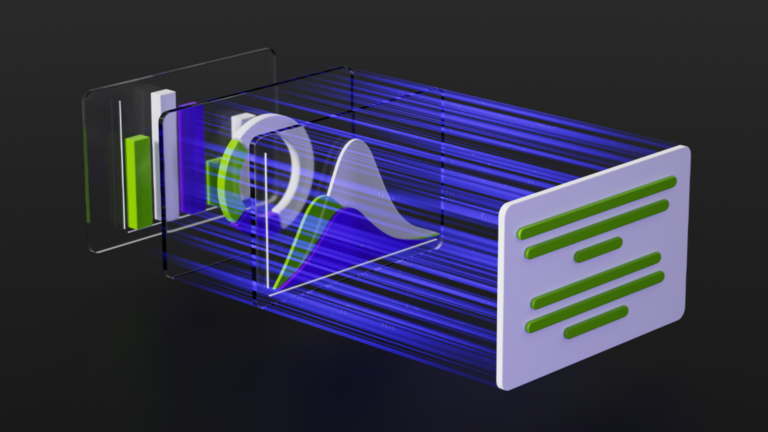Multi-die chips, known as three-dimensional integrated circuits, or 3D-ICs, represent a revolutionary step in semiconductor design. The chips are vertically stacked to create a compact structure that boosts performance without increasing power consumption. However, as chips become denser, they present more complex challenges in managing electromagnetic and thermal stresses. To understand and address this, advanced
Read Article
 Maritime startup Orca AI is pioneering safety at sea with its AI-powered navigation system, which provides real-time video processing to help crews make…
Maritime startup Orca AI is pioneering safety at sea with its AI-powered navigation system, which provides real-time video processing to help crews make…
Maritime startup Orca AI is pioneering safety at sea with its AI-powered navigation system, which provides real-time video processing to help crews make data-driven decisions in congested waters and low-visibility conditions. Every year, thousands of massive 100-million-pound vessels, ferrying $14T worth of goods, cross the world’s oceans and waterways, fighting to keep to tight deadlines.
Generative AI has revolutionized software development with prompt-based code generation — protein design is next. EvolutionaryScale today announced the release of its ESM3 model, the third-generation ESM model, which simultaneously reasons over the sequence, structure and functions of proteins, giving protein discovery engineers a programmable platform. The startup, which emerged from the Meta FAIR (Fundamental
Read Article
 As vision AI complexity increases, streamlined deployment solutions are crucial to optimizing spaces and processes. NVIDIA accelerates development, turning…
As vision AI complexity increases, streamlined deployment solutions are crucial to optimizing spaces and processes. NVIDIA accelerates development, turning…
As vision AI complexity increases, streamlined deployment solutions are crucial to optimizing spaces and processes. NVIDIA accelerates development, turning ideas into reality in weeks rather than months with NVIDIA Metropolis AI workflows and microservices. In this post, we explore Metropolis microservices features: Managing and automating infrastructure with AI is…
 Synthetic data in medical imaging offers numerous benefits, including the ability to augment datasets with diverse and realistic images where real data is…
Synthetic data in medical imaging offers numerous benefits, including the ability to augment datasets with diverse and realistic images where real data is…
Synthetic data in medical imaging offers numerous benefits, including the ability to augment datasets with diverse and realistic images where real data is limited. This reduces the costs and labor associated with annotating real images. Synthetic data also provides an ethical alternative to using sensitive patient data, which helps with education and training without compromising patient privacy.
Exploring SONiC on NVIDIA Air
 Testing out networking infrastructure and building working PoCs for a new environment can be tricky at best and downright dreadful at worst. You may run into…
Testing out networking infrastructure and building working PoCs for a new environment can be tricky at best and downright dreadful at worst. You may run into…
Testing out networking infrastructure and building working PoCs for a new environment can be tricky at best and downright dreadful at worst. You may run into licensing requirements you don’t meet, or pay pricey fees for advanced hypervisor software. Proprietary network systems can cost hundreds or thousands of dollars just to set up a test environment to play with. You may even be stuck testing on…
Explainer: What Is Machine Learning?
 Machine learning (ML) employs algorithms and statistical models that enable computer systems to find patterns in massive amounts of data, and then uses a model…
Machine learning (ML) employs algorithms and statistical models that enable computer systems to find patterns in massive amounts of data, and then uses a model…
Machine learning (ML) employs algorithms and statistical models that enable computer systems to find patterns in massive amounts of data, and then uses a model that recognizes those patterns to make predictions or descriptions on new data.
 Scientists have enabled a stroke survivor, who is unable to speak, to communicate in both Spanish and English by training a neuroprosthesis implant to decode…
Scientists have enabled a stroke survivor, who is unable to speak, to communicate in both Spanish and English by training a neuroprosthesis implant to decode…
Scientists have enabled a stroke survivor, who is unable to speak, to communicate in both Spanish and English by training a neuroprosthesis implant to decode his bilingual brain activity. The research, published in Nature Biomedical Engineering, comes from the lab of University of California, San Francisco professor Dr. Edward Chang. It builds on his groundbreaking work from 2021 with the…
Sit back and settle in for some epic storytelling. Tell Me Why and As Dusk Falls — award-winning, narrative-driven games from Xbox Studios — add to the 1,900+ games in the GeForce NOW library, ready to stream from the cloud. Members can find more adventures with four new titles available this week. Experience a Metallica
Read Article
NVIDIA AI Workbench simplifies AI developer workflows by helping users build their own RAG projects, customize models and more.
